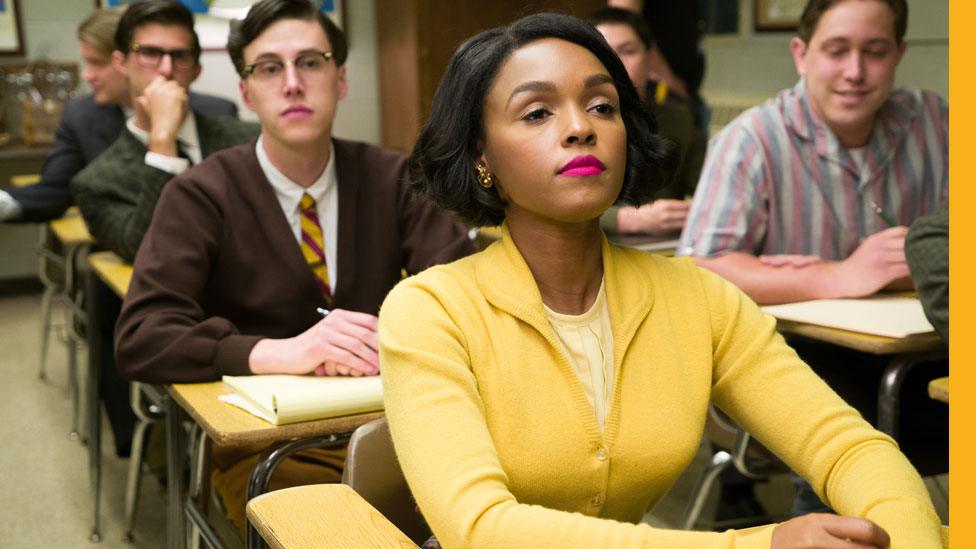Apollo 11: 'The greatest single broadcast in television history'
- Published
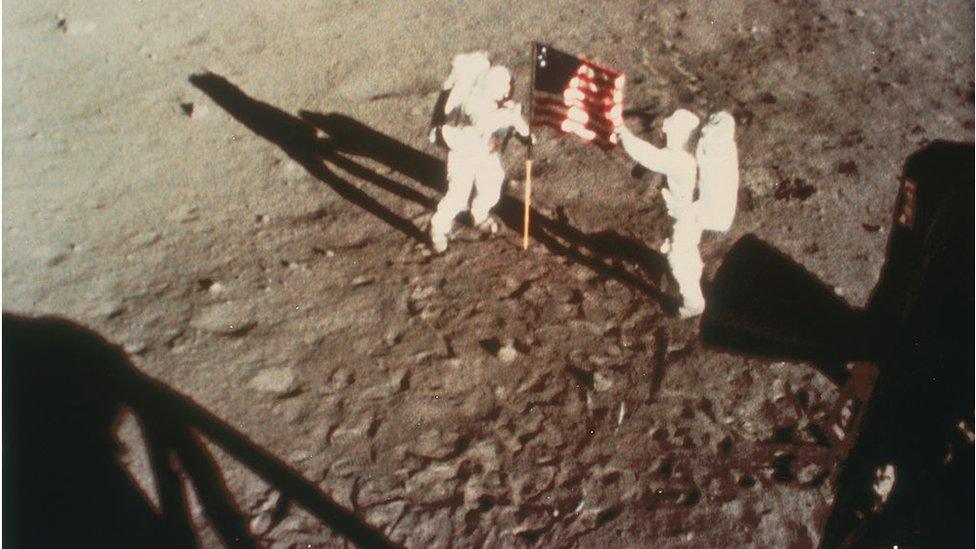
Neil Armstrong and Buzz Aldrin unfurl the US flag on the moon, 1969
The mesmerising television coverage of the Apollo 11 Moon landing 50 years ago brought previously unthinkable images and ideas into the homes of millions, leaving a profound impact on pop culture and the American psyche.
When the Eagle spacecraft touched down on the Moon's surface on 20 July 1969, a television camera mounted on its side captured the first tentative steps and words of astronaut Neil Armstrong and sent them across hundreds of thousands of miles to hundreds of millions of pairs of eyes glued to television sets.
Walter Cronkite, anchoring the CBS network coverage of the Apollo 11 mission, was initially left speechless. Eventually he managed to exclaim, "Man on the Moon!...Oh, boy…Whew, boy!"
Later he recalled he had hoped to say something more profound but the words that came out were "all I could utter".
Nevertheless, the overall quality and erudite tenor of Cronkite's round-the-clock coverage, as part of an energised and extremely dedicated media effort, had a lasting influence on public perceptions of the mission, with the result that it is all too easy to look back through rose-tinted glasses and miss some of the finer, more problematic details.
In the run up to CBS' coverage, Robert Wussler, Cronkite's producer, told Variety magazine that it would be "the world's greatest single broadcast" in television history.
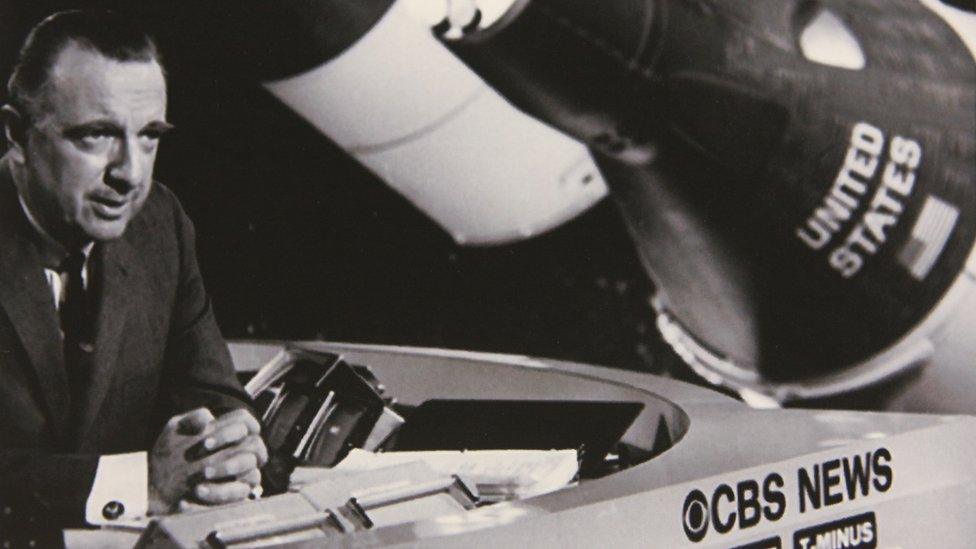
Walter Cronkite reporting about Nasa for CBS News, circa 1969 - 1974, from the Walter Cronkite Papers
Indeed, when the broadcast went out it represented the culmination of what was essentially an enormous public relations campaign that stretched back to Nasa's creation in 1958, one that had been sustained by Nasa publicists and politicians alike, seeking to raise awareness of the Apollo mission for a variety of self-interested reasons.
Cronkite, who through his news presenting had become known as "the most trusted man in America," was on air for 27 of the 30 hours it took for the crew of Apollo 11 to complete their mission, garnering him the nickname "old iron pants".
"Cronkite was as poetic as he'd ever been," recalls Edward Sills, who watched the landing as a young teenager in his living room in Long Beach, New York. "He'd just come out against the Vietnam War, and so had a bit more licence not to be so buttoned down. It was an amazing event to a 13-year-old boy, but Cronkite also saw it through young eyes."
The enormity wasn't lost on Mr Sills' grandfather, either, watching beside him.
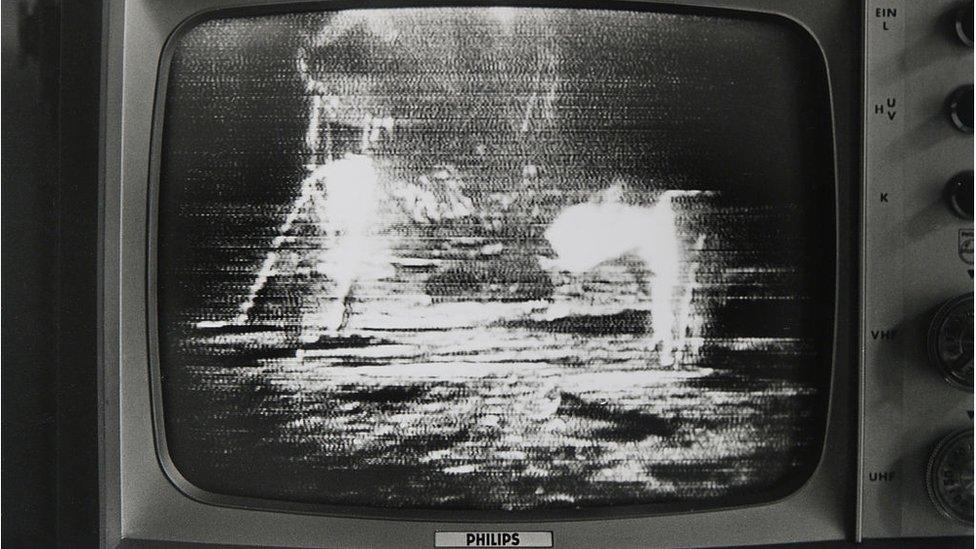
"He was born in October 1893, so had grown up knowing roads with horse and buggy, and was absolutely thrilled to see history being made," Mr Sills says. "The acceleration of technology seemed incredible, and [Cronkite] explained how amazing it was."
Cronkite had previously followed the US's rocket programme when under the auspices of the US Air Force, who were generally hostile toward Cronkite and CBS during test launches and facility tours of the 1950s.
"In those early days, we had to cover the space program from off base [and] the air force would give us no information ahead of time," Cronkite recalled in the 2010 book Conversations with Cronkite, in which Don Carleton, executive director of the Dolph Briscoe Center for American History that houses Cronkite's archives, interviewed Cronkite about his extraordinary life and career.
"[But] we all knew when a mission was about to go, because we were in the motel and these guys would go out, they would leave, they'd be gone from the bar, and then the lights would go on [around the launch pad], and we knew something was about to happen."
After the creation of Nasa, though, the government realised it was a good idea to get the public behind this vast new expenditure.
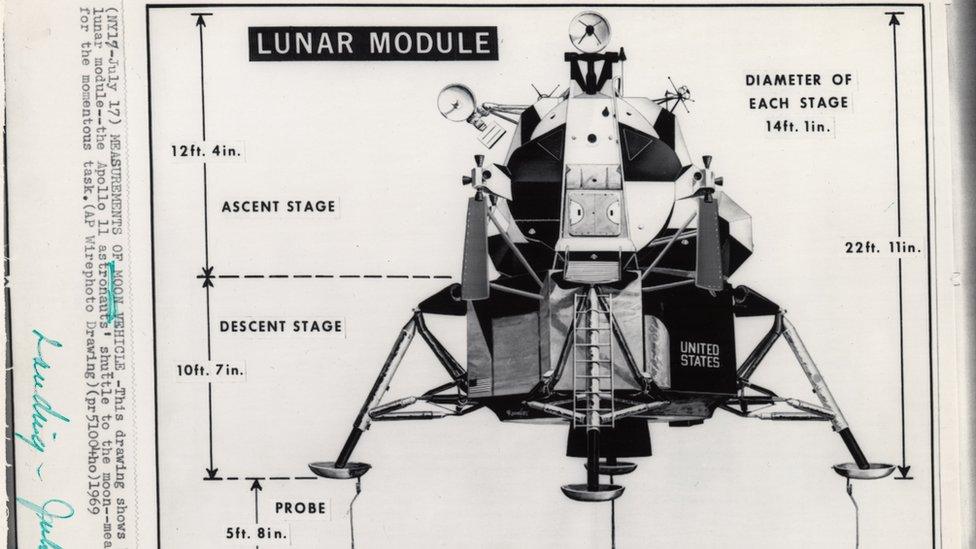
Associated Press wire photo drawing used by newspapers to explain the technical aspects of the Apollo 11 land vehicle spacecraft, from the Alan Paris Collection
This proved manna from heaven for the media, with the stakes further raised in 1961 when President John F Kennedy pledged to send a man to the Moon by the end of the decade.
"Nasa did a brilliant job of marketing the Apollo mission, of feeding reporters rather than keeping everything under the hood," says Tracy Dahlby at the University of Texas at Austin's School of Journalism.
"They cast the astronauts as heroes in a drama and to a large extent the news media bought it. It was an upbeat story they could tell in a time when news about the Vietnam War and our turbulent politics dominated coverage."
By the time of the Apollo 11 mission, TV was heavily invested in the space programme. It had also got its act together in terms of production, notes the Briscoe Center's Ben Wright.
"By then the studios had honed their skills," Mr Wright says. "While there wasn't technology like split screens, what you saw wasn't that dissimilar from the type of reporting you see today, with anchors cutting away cleanly to reporters in the field."
CBS News' planning was intricate, expensive and wide-ranging, involving multiple reporting locations across three continents. CBS memos from the time describe the scope of the news coverage and the significance of the Apollo 11 mission.
"[The moon is the] first step in man's attempt to put into proper perspective Earth's own beginnings and our relationship to that of other worlds, and other elements, and other life," one memo waxed lyrically.
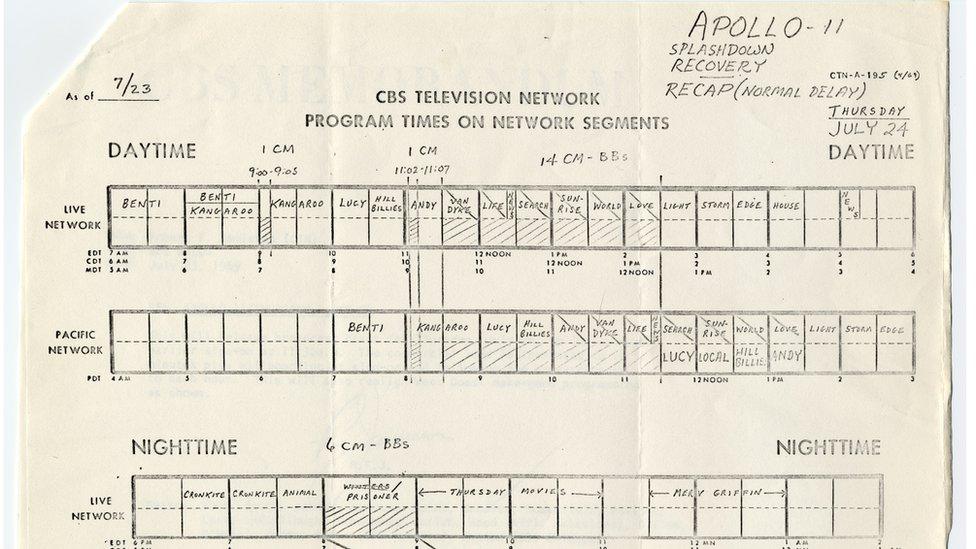
CBS memo with news schedule outlining coverage around Apollo 11's return to Earth from Robert Wussler Papers
"This Apollo flight will rank in history alongside those events of the past thousands of years made memorable by the poets, the historians, and those whose curiosity, drive and determination would have them take that extra step because a continent had to be found, an ocean conquered or a polar region or mountain explored."
It wasn't just the imaginations of those at the networks that were engaged by the audacious gamble.
"Wouldn't it be wonderful if the Moon landing could be used to make more Americans proud they were living on the greatest nation on earth," Bob Eckart, an insurance underwriter, wrote in a 15 May letter to Walter Cronkite at his New York office, before describing a "Moon Party" he and his friends were planning to hold, replete with "moon dust cookies," "crater soup" and "moonshine" to drink.
CBS, along with the country's two other networks, NBC and ABC, spent a combined $13m (£10m) on programming, close to what they'd spent the previous November covering returns for the 1968 presidential election.
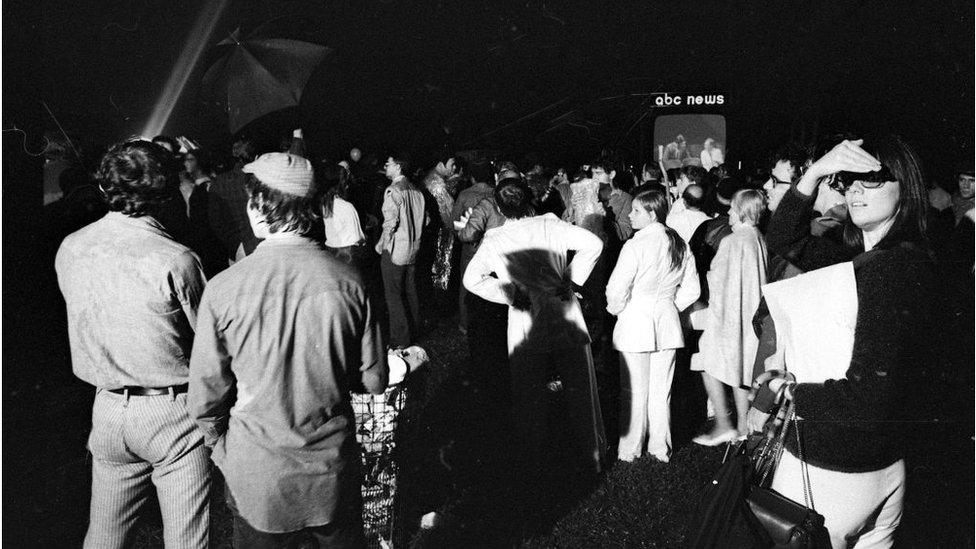
Spectators gather at Central Park in New York, New York to watch reports of the Apollo 11 moon landing on one of the three giant television screens set up by the major networks on July 20, 1969
Their jobs were helped by how Nasa, with one eye on history and another on their future budget, worked tirelessly to make audio-visual materials of the Moon landing, photographs and printed updates available to television networks in as close to real time as possible, as well as to journalists with radio stations and newspapers, (all supplemented by a comprehensive 254-page press kit, external).
The effects of these combined efforts on the 94% of TV-owning Americans who tuned in to watch the moon landing were palpable.
"Without television, the Moon landing would have been a merely impressive achievement - an expensive stunt, to the cynical," remarked the New Yorker's Joshua Rothman. "Instead, seen live, unedited, and everywhere, it became a genuine experience of global intimacy."
Mr Wright notes how much of the magic came from the coverage being, for once, good news amid the turbulence of the 1960s in America that in addition to protests over the Vietnam War included assassinations of civil rights leaders and politicians, riots in countless American cities and a Democratic National Convention that descended into anarchy.
Another part of the appeal, says John Craft, a professor at the Walter Cronkite School of Journalism at Arizona State University, was the landing occurring in the wake of the Russians putting the Sputnik satellite into space.
"Americans had seen how there was a challenge out there to our personal leadership in the world," Mr Craft says. "So to put a man on the moon felt like we were back in business."
All the while, though, this uplifting, invigorating demonstration of American prowess could turn into tragedy in only an instant - and viewers knew it.
"The coverage took you into the Houston control room, where you had rows of guys basically sweating wondering if it would work out, and if they would be able to get the astronauts off the Moon," Mr Craft says.
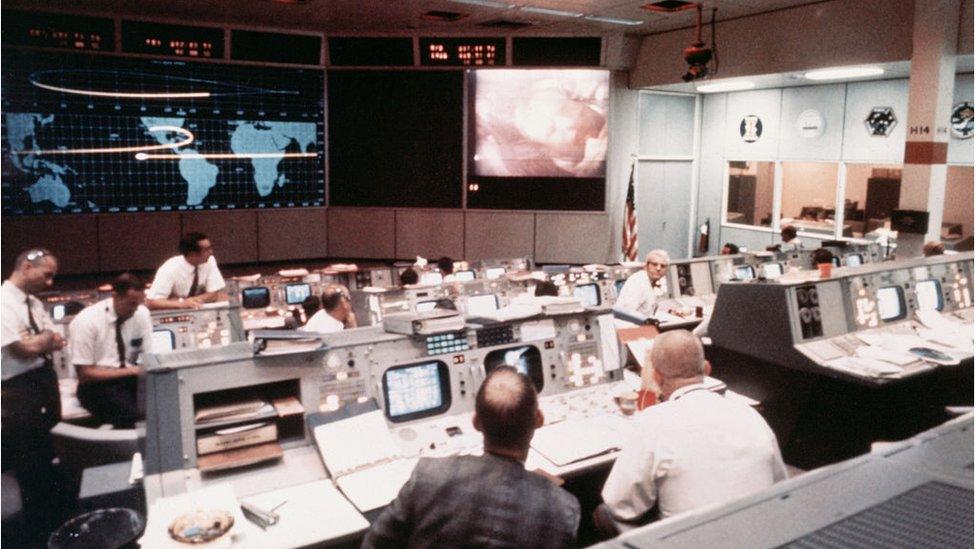
Mission Operations Control Room on the second day of the lunar landing mission
"Viewers felt the same things as they did - you could write it as fiction, but to watch it in real time and not know what would happen made it unbelievably dramatic."
He notes how arguably there has never been a media event since to match it for compelling viewing.
"Watching it around the TV set in Ohio, I was able to go to the window and look out and see the Moon, just as the TV showed a man setting foot on it," Mr Craft says. "That's going to be a hard one to match."
Cronkite described the landing as the 20th Century's Christopher Columbus moment - which gets at how the monumental achievement contained its own controversies.
Historians argue about the significance of Nasa's Apollo missions. Compared to penicillin or the microchip, landing on the Moon appears a frivolous achievement.
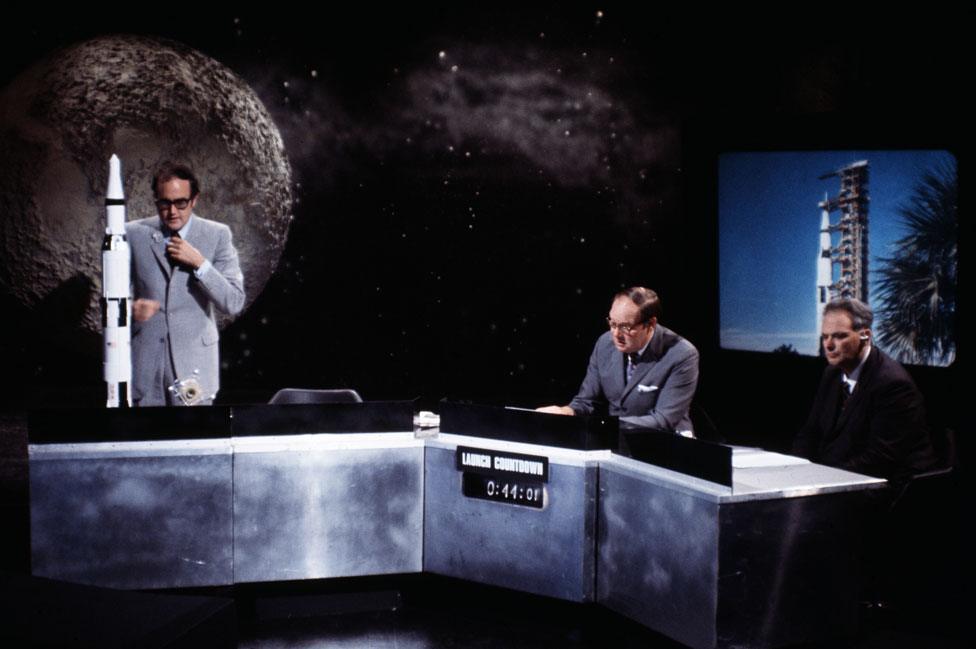
The BBC coverage was led by James Burke, Cliff Michelmore and Patrick Moore
Politically the world continued much as it had before, despite some commentators hoping the Moon landing would be an opening for peace through inspiration and innovation.
The Apollo 11 mission was also an exceedingly white experience, Mr Wright says, "with a lot of men in suits talking about men in space suits and doing so very earnestly, often quoting Greek tragedy". Women or people of colour barely factored into it - even the spacesuits couldn't have been more white, he notes.
It was wildly expensive too, at $19.4bn, according to a 2009 report by the Congressional Research Service - an estimated $116.5bn at today's rates.
Critics at the time, including figures in the anti-war and civil rights movements, pointed out how a man on the moon wasn't much use to impoverished children in America's neglected inner cities (today it is argued that scientific research from the space programme span off innumerable developments that continue to benefit everyday life).
"It's easy to forget when looking at events in the rear-view mirror that the American public had concerns about the money being spent to put a man on the moon when we had all these problems staring us in the face on Earth," Mr Dahlby says.
"Journalism can be a blunt instrument, but I think the news media today, at its best, would apply more scrutiny to all aspects of a big story like a moonshot - what went into it, who was involved, the costs - and that's a good thing: data-reporting and other new techniques mean responsible media can go deeper, faster, and do a better job."

Front page of The Austin American newspaper, July 22, 1969, from the Michael Cooper Papers
In the aftermath of the mission, Nasa worked hard to promote its activities and cement its legacy, but during the 1970s both the public and the media began to question the costs associated with space exploration.
Yet the cultural impact of the Moon landing proved, without question, profound. "Dark side of the moon," "the eagle has landed," and "one small step for man," permanently entered the American lexicon.
Meanwhile, fascination with outer Space did not wilt. The 1970s witnessed an explosion of interest in science fiction, influencing rock stars like Pink Floyd and David Bowie and film makers such as George Lucas, who directed the 1977 sci-fi classic "Star Wars", and Ridley Scott who unleashed the sci-fi horror film "Alien" on the public in 1979.
Ultimately, those eerie images from the Moon captured and broadcast 50 years ago continue to transcend any debates about the cost-benefit analysis of the landing.
Thirteen facts about one of the greatest events in history
"The technological and scientific developments of our own century just boggle the mind," Cronkite recalled in Conversations with Cronkite.
"And yet, I think that the one incident, the one episode that will be remembered, is when man escaped his environment on earth."
Afterwards, back at the terrestrial level of American media, the emergence of new networks and increased competition began an inexorable shift from a tradition of providing a public service to making money.
"There is so much competition today, most media is a business - you need to make money and be answerable to your shareholders," Mr Craft says. "People forget there should be some public concern that goes along with that."
All pictures copyright.
- Published12 May 2019
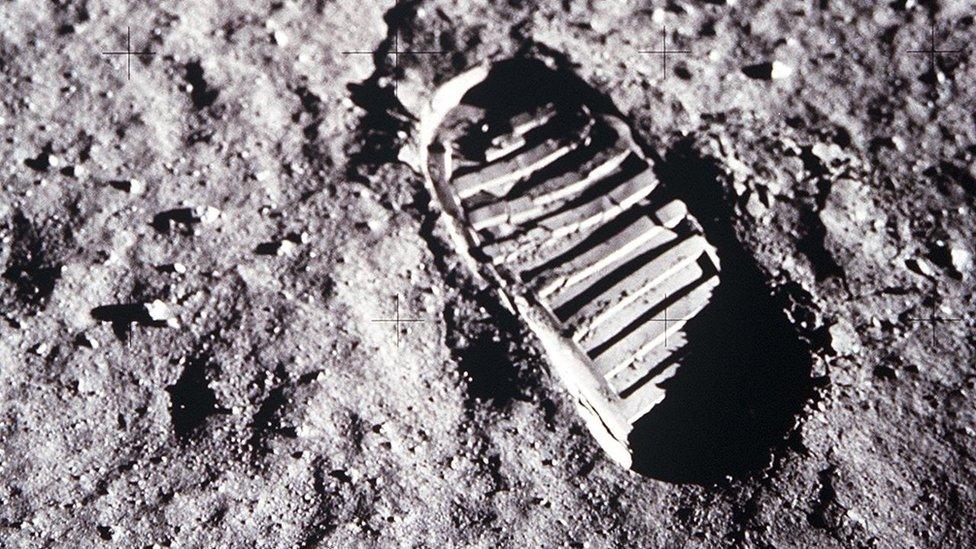
- Published17 May 2019
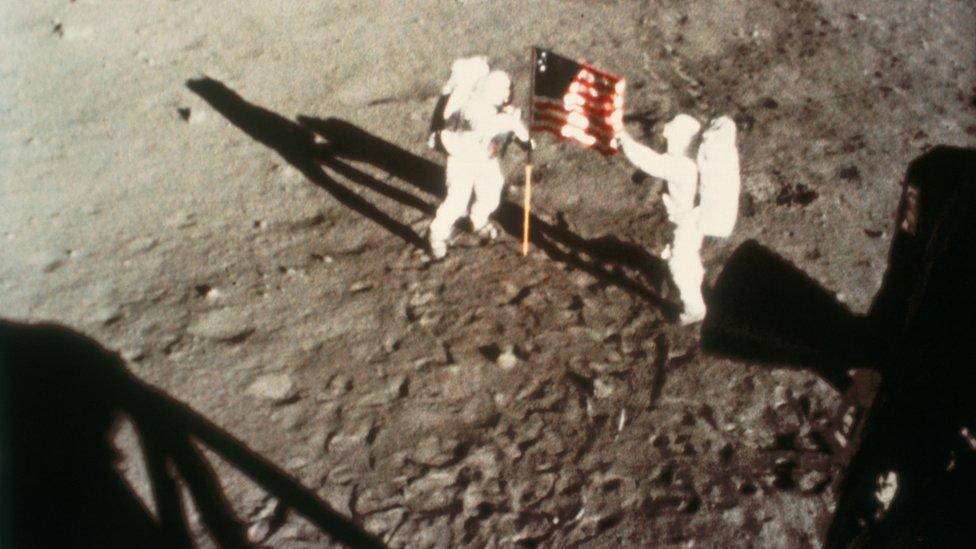
- Published12 May 2019

- Published18 February 2017
